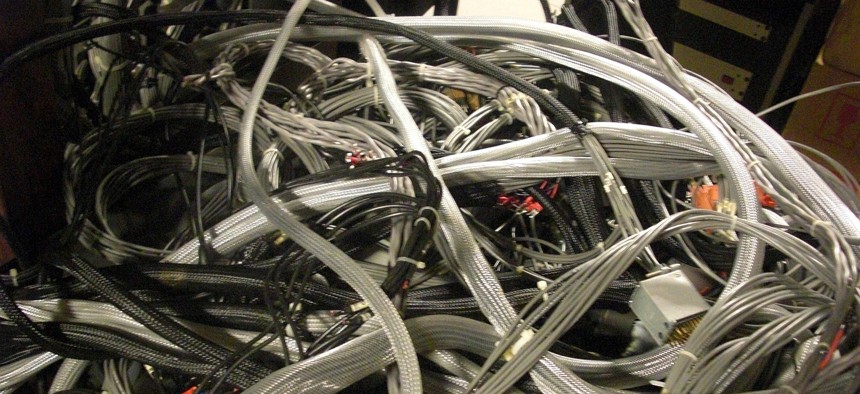Agencies Aren't Hitting Disconnection Targets Under EIS
Some agencies may have to exercise "continuity of service" contract clauses to keep phones, internet and other network services online beyond the May 2023 deadline.
Federal agencies fell short on a key milestone for shifting their telecommunications contracts to the $50 billion governmentwide Enterprise Infrastructure Solutions (EIS) contract, and many may have to activate "continuity of service" clauses in their current contracts to avoid disconnection next year.
Federal agencies were supposed to be 90% disconnected from expiring telecommunications contracts including the Networx and Washington Interagency Telecommunications System vehicles by March 31 of this year. By that date, just 55.7% of agencies hit the goal, Tracey Malick, deputy director of the Office of Enterprise Technology Solutions at the General Services Administration, told FCW on a recent webcast.
Malick said the government is not on track to hit its next major milestone of being 100% disconnected from legacy contracts by the end of the current fiscal year.
Some agencies are showing good progress. There were 118 agencies that did reach the March 31 goals, and of those, 99 are 100% disconnected from legacy contracts. But there is concern that next year's overall goal of complete EIS adoption will not be met.
"Looking ahead to May 31, 2023, there is a risk that some agencies will not be done with their transition on time," Malick said.
GSA announced in February that agencies would be able to activate "continuity of service" provisions to keep active service on legacy contracts through May 31, 2024. However, Malick doesn't want this to be thought of as another extension. To tap the continuity of service option, agencies must enter into an agreement with GSA and develop contingency plans in case legacy service is cut off before service under EIS takes effect.
"It's important to keep in mind that that 'continuity of service' period does not eliminate risk," Malick said.
Hiccups in the transition to new telecom contracts are nothing new. GSA rolled out the Networx vehicle in 2007 but many agencies delayed adoption. The Government Accountability Office estimated that agencies lost $329 million in savings by failing to adopt Networx in a timely fashion.
"When you take a look at the history of the past two telecommunication transitions, agencies have sort of dragged their feet in this initiative, and really did not make it a priority until they were close -- very, very close to the deadlines for closing out those current set of contracts," Carol Harris, then GAO's director of IT and cybersecurity, testified at a technology oversight hearing held by the House Oversight and Reform Subcommittee on Government Operations in January 2022.
EIS adoption is now a metric in the biannual Federal Information Technology Acquisition and Reform Act scorecard. At the January FITARA hearing, 15 of 24 big agencies, including the departments of Homeland Security, Defense, Veterans Affairs, State and GSA itself received an "F" grade for transitioning off of Networx and hitting EIS adoption timelines. Just four "A" grades were doled out – to USAID, the National Science Foundation, the Nuclear Regulatory Commission and the Treasury.
An updated scorecard including EIS adoption updates is expected to be released for the next FITARA oversight hearing in July.






